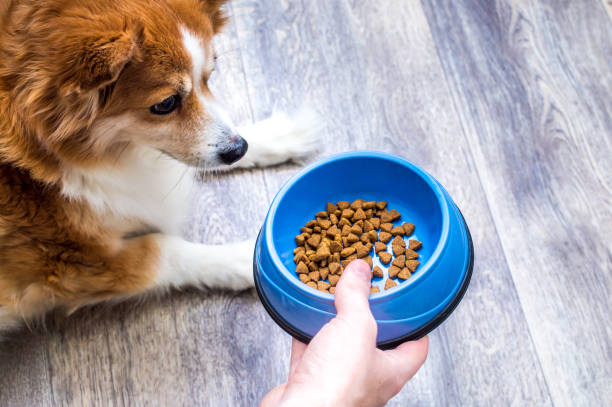Switching Bowls – How to change dog food
Just like humans, the nutritional requirements of dogs also change with age. In your late teens or early 20s, you could eat a large pizza for cheese lovers in one sitting without gaining a pound. It’s different now. Nutrition and diet are essential to ensure that dogs live long, happy lives. Puppy Formulas, for example, are rich in carbs and protein, making them ideal for growing dogs. High-protein food can be harmful to older dogs.
Here are some factors to consider, whether you are happy with the dog food you are using or looking to change.
Why should I change my dog food
Dogs require nutrition that reflects their activity level, age, and overall health. You don’t have to put your dog on a strict ketogenic diet, but you must give him a balanced diet.
Food sensitivities can cause your dog to experience an upset stomach or itchy skin. This will require a diet change. This condition can occur immediately after a change in diet, or it may take several years.
If you want to reduce weight or prevent disease, you may also need to alter your dog’s food.
How do I change my dog’s food
Planning is required to change your dog’s diet. It should be done over seven days or according to the advice of a vet. Follow these guidelines to mix the old and new food slowly.
Day 1: 75% of old food and only 25% of new food
Day 2: 70% of the food is old, and 30% is new
Day 3: 60% of the food is old, and 40% is new
Day 4: 50/50 between old and new food
Day 5: 40 % old food and 60 % fresh food
Day 6: 25% of old food and 75% of new food
Day 7: All-new food
Your vet may recommend changing your dog’s diet immediately if your dog has serious health problems.
What to Know Before Switching Foods
All dogs are not the same. When switching foods, it is important to consider your dog’s preferences and feelings. Talk to your veterinarian and read product reviews. If you are switching food because your dog doesn’t like the current meal, then take a tip from Nick Jonas: “Throw some bacon on it,” which means adding meal improvers for flavor and taste.
Consider the following before changing your diet:
It is best to transition food slowly over days. If your vet has not recommended it, immediate diet changes may be harmful.
Test the food on your dog before buying it in bulk.
Avoid wheat, beef, dairy products, eggs, and poultry if you are trying to overcome stomach sensitivity.
Avoid giving your dog human food or dog treats during the process.
The results of a dietary change can take up to twelve weeks.
Speak to your veterinarian if you have any questions or concerns.
Switching your dog to a different food, regardless of age, is important. Do your research and discuss your dog’s diet with your vet. You can make the transition as smooth and easy for your dog as Joey Tribbiani enjoyed his meatball sub.
“I and Love and You,” is proud to offer natural, healthy, grain-free pet food in various flavors that meet your four-legged friend’s needs and wants.

